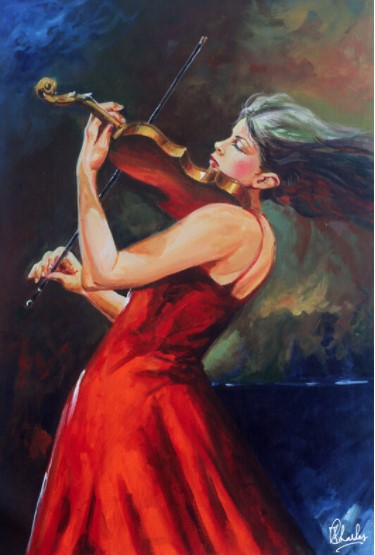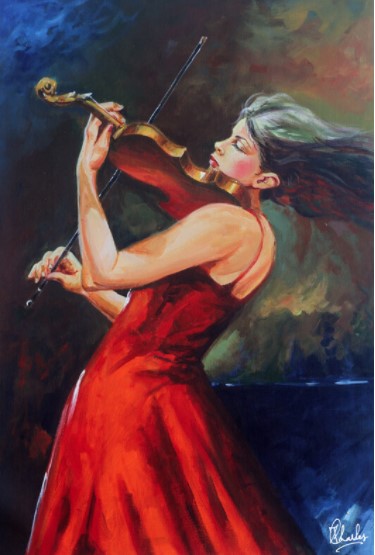Art Style : Essential Oil Painting Techniques and Tips

Oil painting methods can feel intense when you are first figuring out how to paint. Though all the painting styles are unique in their field, oil paintings can be especially exceptional. Oil painting on canvas, in the long run, turned into the foremost medium utilized for artworks, because its advantages are broadly known. Now, oil paintings on canvas in India are in high demand because renaissance oil painting strategies used in Indian oil artworks had succeeded in gum-based paints in most of Europe.
Linen is an expensive and mostly an unnecessary expense, however, many professional artists prefer to use this top-quality painting surface. I admit there is some benefit when it comes to dry brushing on linen, as it breaks up the painting nicely, but I still don’t feel the cost merits the benefits.
We think you’ll agree that these essential painting techniques should be in every artist’s tool kit. Let us discuss the essential tips to change your techniques and give new life into your oil paintings.

-
Hold the Paint Brush Correctly: There is a wide range of holds on the paintbrush that an artist can use while painting. Apart from that, there is one 'go-to' strategy that each painter should know: to get the most smoothness and affectability with your strokes, hold the brush handle as far back as you can. This may feel awkward at the beginning; however, it offers the best control since it permits you to paint with your entire arm as opposed to only your wrist.
-
Know Your Materials: When you know your paintbrush and its usage, you can gradually discover which materials and instruments you like best. Often, an artist beginning to work in oil paint will need to accumulate a choice of brushes, clothes, a palette, surfaces to paint on, a groundwork, oil, a medium, and a couple of containers of paint.
-
Glazing: A glaze is a slender, semi-translucent layer of paint. It is a well-known oil painting strategy, where glazes are applied on a dull coat of paint, which has been permitted to dry. Numerous painters utilize thin and thick glazes and impasto brushwork to make a change in artistic creation. The impasto zones would show up pushed forward in the artwork contrasted with the milder coatings. While glazing, it is ideal to use paints that have all the more a translucent quality. White, for instance, isn't extraordinary for glazing as it is incredibly murky. When there are different layers of glazes, the hues optically mix as though they were joined entirely, without the shades blending. This makes fascinating impacts that are successful for picture painting.
-
Use of Palette Knife: Applying a palette knife compels you away from thoughts of exactness and line, and makes you center around how the push and pull of shading and shapes can make a picture. Typically, painters suggest chipping away at a surface at any rate 9-by-13 inches, as a more prominent space may urge you to make bigger, progressively sure stamps.
-
Oiling Out: Oiling out is a method utilized in oil painting On Canvas when the oil sinks into the lower layers of the artwork, leaving the top layers lacking imperativeness. Frequently dropping happens in patches, as opposed to over the entire artistic creation because of changed drying times of the paints utilized (a few colors dry quicker than others). Oiling out isn't a method which fledglings ought to be stressed over. It is a more significant amount of a propelled procedure and is certainly not an essential piece of figuring out how to paint. It is a helpful strategy once one turns out to be further developed with oils. Practically speaking, oiling out would include spotting an extremely slender measure of craftsman-quality oil medium over the composition zones, which have soaked in utilizing a delicate fabric. This should just be done once the painting is dry to contact, as you don't need any blending of the hues.

One big advantage of acrylic painting and oil painting is that you can build up thick impasto that will help convey a three-dimensional look. Other media such as watercolor and pastels lack this quality. Start with applying thick paint in the foreground and gradually go thinner with the paint as the planes recede, leaving just a thin layer in the most distant background.
“The creation of a painting takes as much trickery and premeditation as the commitment of a crime.” Edgar Degas
Oil painting is an incredible medium and was for the most part a favored decision for old painters. Oil paint is moderate drying and flexible, permitting you to control it on the canvas effectively. If you love to paint on stretched canvas, keep at it. They will likely outlast us and the collector without appreciable problems. If you check our online art gallery, you will find a vast variety of oil painting online and master them. If you are keen on oil paintings for interiors , these tips will help you out. It will help if you go through more research as oil painting is an exceptionally intricate specialty.
